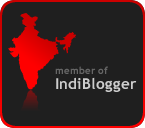Ok, first off – this isn’t a rant. It is an observation both from an author’s point of view as well as a reader’s. Both in this case being me. We’re talking about the book, obviously. The last six months or so have been nothing short of crazy for me, in terms of work, life etc. But more importantly, it has been an eye opener of sorts. And that’s just as well, because the wider one’s eyes are open in such cases, the better would be the (future) journey, wherever it is that one wants to go.
So, let’s talk about Frankly Spooking. Yeah, my first published book. Very special to me, of course. I’ve blogged earlier about the exhausting but satisfying journey from submission to print so I’ll not blah blah about that. What I’d like to do now is write down a few of my thoughts about the production and after-production of the book.
Right from childhood I’ve been a recluse when it came to showcasing my own work. Call it genes, call it nature or whatever, I’ve never been a good mascot of my own work. Class essay prize, a singing trophy, a recitation prize or even a rank in my earlier years in school. I’d always have a certain detachment to the entire process and never really got euphoric about any of those milestones. My mom, well, she’s a different story, but I think I picked this trait up from my father. Good? I don’t know. Bad… don’t know again. Relative, perhaps.
Anyway, coming back to the book. When it did go into print and right until it reached bookstores, I was bombarded with questions: When will it be available online? What is the response? How many copies sold? Etc, etc. And each time I’d hem and haw, smile and say – we’ll know soon. We knew of course. Many of you have read it, reviewed it, liked it, loved it, wanted more from it. So the entire gamut of post production drama has happened. Articles were written, a couple of interviews were given, and many more opinions, reviews and ratings later, one would think I’d joined that shiny brigade of authors who’d overnight managed to turn their bank accounts into a hefty bag of gold. Right?
Wrong.
While the book did garner good reviews and was appreciated by many, in terms of actual sales, it hasn’t managed to open eyes, let alone raised eyebrows. And this was precisely what opened my eyes to the strange world of publishing.
Best selling author of the banking thriller genre, Mr. Ravi Subramaniam, who also happens to be a good friend I made during these last few months, has very wisely written an article in his blog which talks at length about this phenomenon. It’s a text-book lesson for aspiring authors to remain grounded and continue writing that dream novel no matter what.
So what does best-selling really mean in our country? Does it mean the book has sold in lakhs? Does it mean it has broken a record of sorts in sales? Neither. It only means that within a stipulated period of time, it has managed to make a number which differs from bookstore to bookstore. And the time period also differs. It could be a monthly best-seller, a weekly best-seller, or an all-time best-seller depending on what the bookstore chooses to call it based on their internal algorithm. Whatever that means.
Coming back to Frankly Spooking. Many of you may wonder – “how? It was good, we all loved it, so why hasn’t it made a noticeable difference in terms of sales?” After all, a commercial book is written with the sole purpose of selling it, right? The answer to that isn’t all that simple or straightforward. Because a good book and a good ‘selling’ book come from two very different and distant planets. What is good, need not sell, and what sells, need not always be ‘good’. Again, I use the word ‘good’ for want of a better word. Sales of course is a beast that is not dictated by a book’s literary worth. It is dictated by a book’s brand value.
Yes, brand value. And by that let me repeat, I don’t mean branding in terms of the actual content of the book, but really, by the value or the ‘visibility’ it created for itself. And that’s where the post-production drama called marketing enters the picture.
And even then, what sells a book is not merely good marketing. It’s a coming together of a whole lot of things; kind of like 'stars aligning in space'. It’s only when all these factors come together, does a book start flying off the shelf in large numbers. Sometimes at a speed that’s difficult even for the publisher or the printer to handle. Yes, it has happened. We all know a few authors who’ve managed to pull off this literary magic, right? So are the rest junk? Do those books don’t deserve sales? Certainly not. They’re good, they’re all good in their own merit. But what probably didn’t happen in their favor was the coming together of all these factors.
So what DID go wrong with Frankly Spooking’s marketing? Bad marketing? No, there was sufficient marketing that happened in terms of promoting it online – Facebook/Twitter/Print, it was featured well in all these three areas. So then? In my knowledge, what did the book in was insufficient visibility and a proper projection of its real image. What the heck does that mean you’d ask. It means, something somewhere went wrong in the way it was presented and the way readers perceived it to be. Which resulted in reluctant sales. And by that I mean people almost reaching out for that ‘buy’ button on their devices and for that title in actual bookstores, but not actually rendering that action.
Few pointers, or like I said the ‘stars’ that unfortunately didn’t align for this book:
- Delay in actual time to market. It was delayed by almost a month, month and a half. We started teasers, visuals and other things to increase the curiosity of the readers/buyers, but for a long time didn’t have the actual book in place to really sustain that curiosity. Many lost interest after a while. The first blow.
- I was made to believe that online media and print were the way to go for first time authors, due to some internal stats the publishers had about first time launches not making a lot of difference to their bottom line, so there. Second blow. A launch might’ve created or at least built up a certain image in people’s minds. That didn’t happen. But honestly? This part I’m really not concerned with, and I personally know that a lot of launches haven’t done any good. But all the same, some sort of ‘introduction’ might’ve helped. And I being a novice, had no idea of going about it on my own - the cost it involved etc. So I left it at that. Plus the time, which I've listed below.
- The cover layout & design. All hunky dory, it was liked by the editorial dept., the publisher loved the ‘different’, ‘hatke’ design of the book. In fact, a few readers too told that it had a certain eeriness to it. But, what we forgot was, as a ‘shall I pick it up’ factor, the book wasn’t much to write home about. It looked very ordinary and also the quality of paper used in the cover wasn’t upto the mark. Nothing much could be done because I stay in another city so I have no control over this. I thought about this only after the book was printed and I received my copy. Too late.
- Time/involvement – as is the case with anything in life, you need to invest time and effort (not to mention a fair amount of money as well) to make a difference. The timing somehow didn’t seem right. I was neck-deep in work and had a lot of other commitments to be really able to make time for my own promotional activity. And money, of course, much of it was spent by the publisher but I guess it wasn’t enough to garner enough visibility. My loss.
- The genre. This actually came as a total surprise to me. While people love thrillers/comedy/romance/crime, when it came to horror, not many were inclined to spend their hard earned money on the genre. ‘Will borrow from somebody and read’ was an oft-unspoken vibe I got. I don’t know if it’s the age-old stigma our nation has, that anything spooky is inauspicious, evil or plain against their cultural religious sentiments, one thing was sure. Horror wasn’t a ‘yay, I’ll pick this book up today’ genre. Again, my loss.
- Last, but certainly not the least, and this makes a huge, really huge difference to the sales of any book. The pricing. At almost 300 bucks, many felt the book was steep. And I don’t blame readers. I myself have many a time hesitated picking up a book of popular fiction that was priced above 200 bucks. Of course, I’ve made all the right choices when I did pick up books above this range. Thankfully. But more or less, this was a very prominent ‘concern’ many had. ‘Oh, it’s 300?’ Some were polite enough to change the subject, some were pretty forthright about it. Again, this wasn’t something in my control. Maybe the publishers saw some worth in the book to price it at that tag, or they did it to retain their own brand value, one will never know. And by the time discounts started appearing on online stores, I guess the initial impression was made. So, off went that click from the ‘buy’ button.
This is not to say that publishing a book should be seen as a nightmarish experience. Not at all. It’s a greatly satisfying experience. One that all writers should look forward to. I for one, am looking forward to the entire rigmarole again. I’ve already begun work on my next, and have ideas lined up for a few more. All I’m saying is, for aspiring authors out there, do keep these things in mind when you wish to ‘sell’ your book well. Critical acknowledgement, good reviews and ratings are all very good, and I must say, you guys and the many others who read the book have been really generous with comments. I’m humbled, thank you. But I’m also saying that while word of mouth is good, one must also keep in mind the above pointers.
And of course, you must have a good story to tell.
****


